Scaled Quail
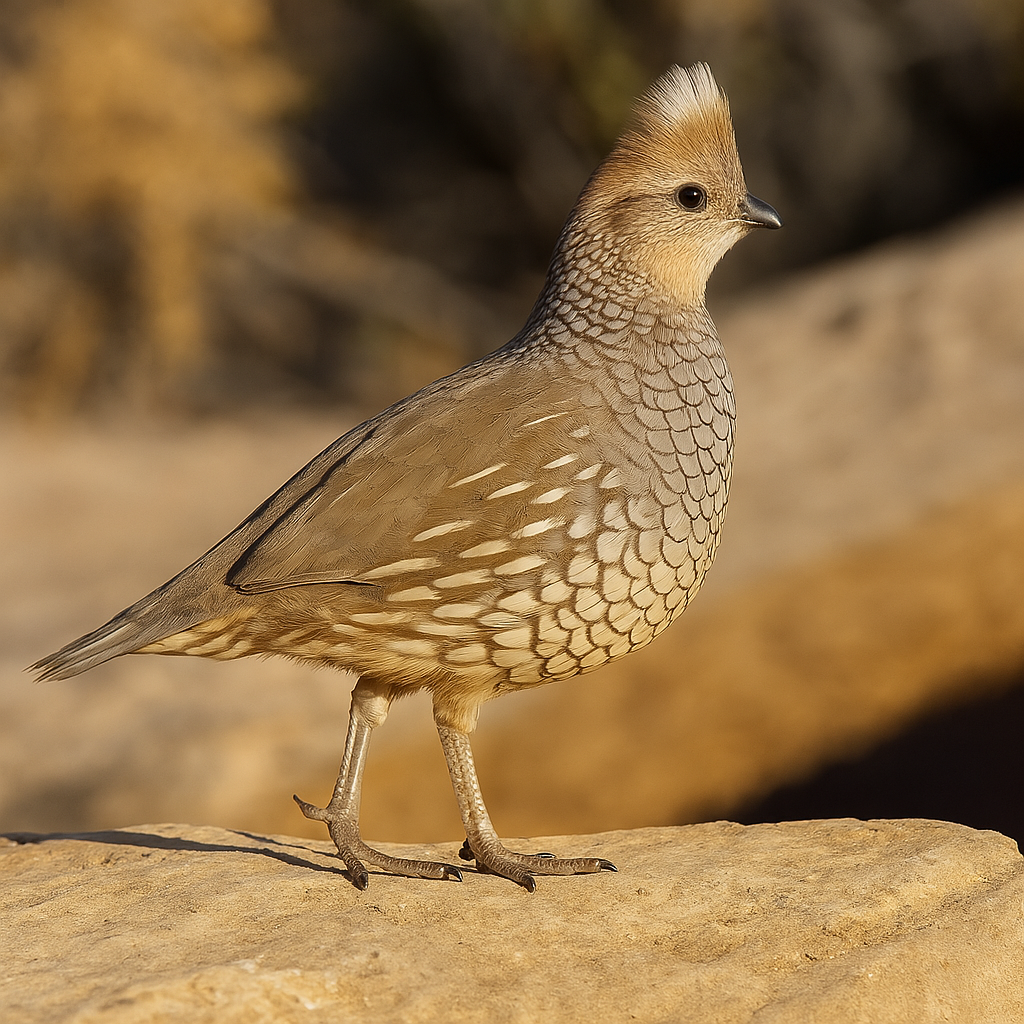
Lifespan
3-6 years
Height
15-18 cm
Length
25-30 cm
Quail Ratio
1 Male to 2-3 Females
The Scaled Quail, known for its unique scaly feather pattern, is an active bird that needs space and a secure environment. Though more skittish than other quail, with proper care, they can live 3-6 years in captivity.
Scaled Quail Call (Male Call)
Physical Characteristics
How many females to a male
Scaled quail do best with a ratio of 1 male to 2–3 females because they are semi-territorial and can become aggressive if too many males are present. This ratio helps prevent fighting and reduces stress on hens by avoiding over-mating. Since scaled quail often form small pair bonds or harems in the wild, keeping them in small groups mimics their natural behavior and leads to better breeding success.
Size
Scaled Quails are medium-sized quails, around 10–12 inches (25–30 cm) in length, with a height around 6–7 inches (15–18 cm).
Appearance
Their defining feature is their blue-gray plumage with a scalloped pattern, giving the appearance of fish scales. They also have a distinctive white-tipped crest that stands upright on their heads.
Lifespan
The Scaled Quail typically has a lifespan of 3-6 years in captivity, but with optimal care, including proper diet and a clean environment, some may live up to 7 years.
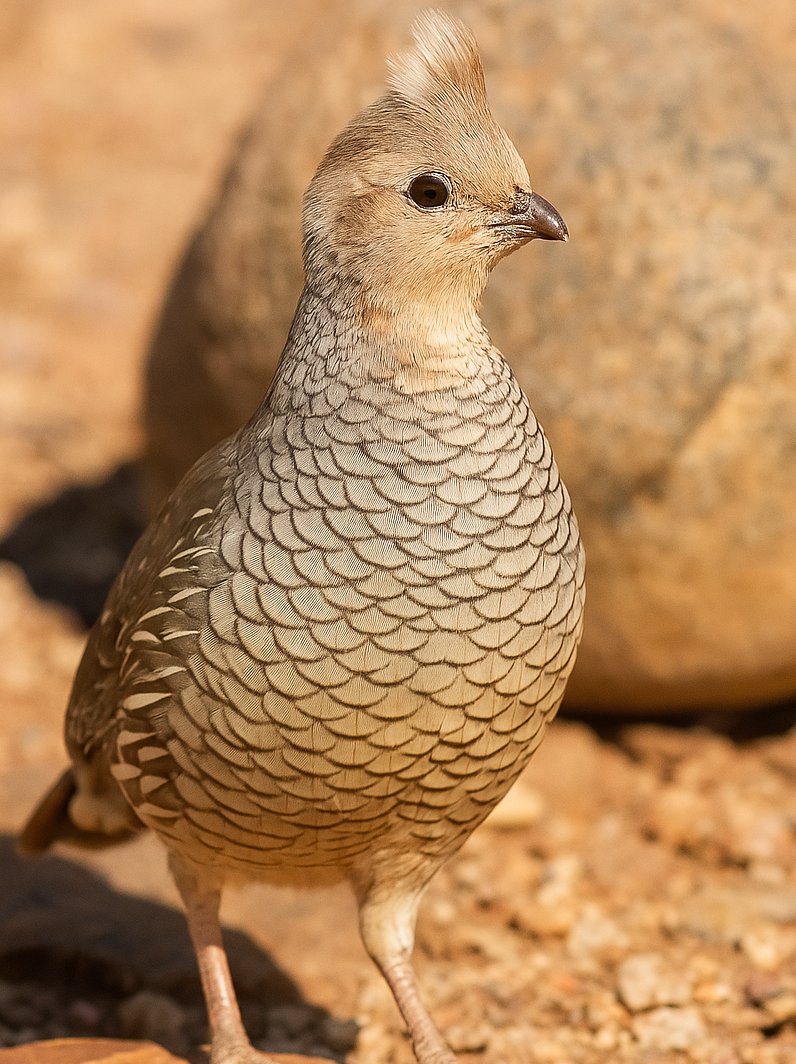
Habitat
Size of habitat
Scaled Quails thrive in arid and semi-arid environments such as deserts, grasslands, and shrublands. If kept as pets, they require spacious enclosures with ample ground cover to mimic their natural habitat.
Substrate
Scaled Quails do best with natural substrates like sand, soil, or wood shavings. These materials allow for easy cleaning and mimic their natural environment.
Shelter
Ensure the enclosure has sheltered areas to protect them from harsh weather and give them a sense of security.
Dust Bathing
Scaled Quails enjoy dust bathing, which helps them keep their feathers clean and free of parasites. Offer a shallow container filled with sand or fine dirt for this activity.
Protection
Ensure the enclosure is secure with fine mesh to prevent escapes and protect from predators. Provide a sheltered area to shield quails from weather extremes.
Diet
Food
Their diet consists mainly of seeds, grains, and insects. In captivity, they can be fed commercial game bird feed
Protein
Their diet can be supplemented with fresh greens, small insects, and grains to mimic their natural foraging behavior.
Water
Ensure they have constant access to clean water.

Social Behavior
Scaled Quails are generally social birds that prefer to be kept in pairs or small groups. However, during breeding season, males can become territorial. They are more skittish and less tame compared to other quail species, and may take time to adapt to human interaction.
Activity
Scaled Quails are active ground-dwellers, often scratching through the substrate for food. They need space to move around, dust bathe, and hide under cover to feel secure.
Handling
Scaled Quails can be skittish and shy, especially if not accustomed to human interaction from a young age. Gentle, regular handling is key to gaining their trust, though they may always retain some wariness due to their natural instincts.
Health
Clean Environment
Providing a clean and spacious environment is crucial for the health of Scaled Quails.
Health Monitoring
Regular monitoring for common vet ailments such as respiratory tract infections and parasites are recommended. Access to fresh water and proper diet ensure their well-being.
History
The Scaled Quail (Callipepla squamata), native to the southwestern United States and northern Mexico, is known for its unique scaled feather pattern. Historically, it has been a popular game bird due to its resilience in arid habitats. Though not as common as other quail species in the pet trade, its distinctive appearance and hardy nature make it an intriguing choice for quail enthusiasts.
Modern Interest
In recent years, the Scaled Quail has gained interest among bird enthusiasts and aviculturists for its unique appearance and adaptability. Despite their more challenging nature, they are appreciated for their distinctive scaled plumage and lively behavior.
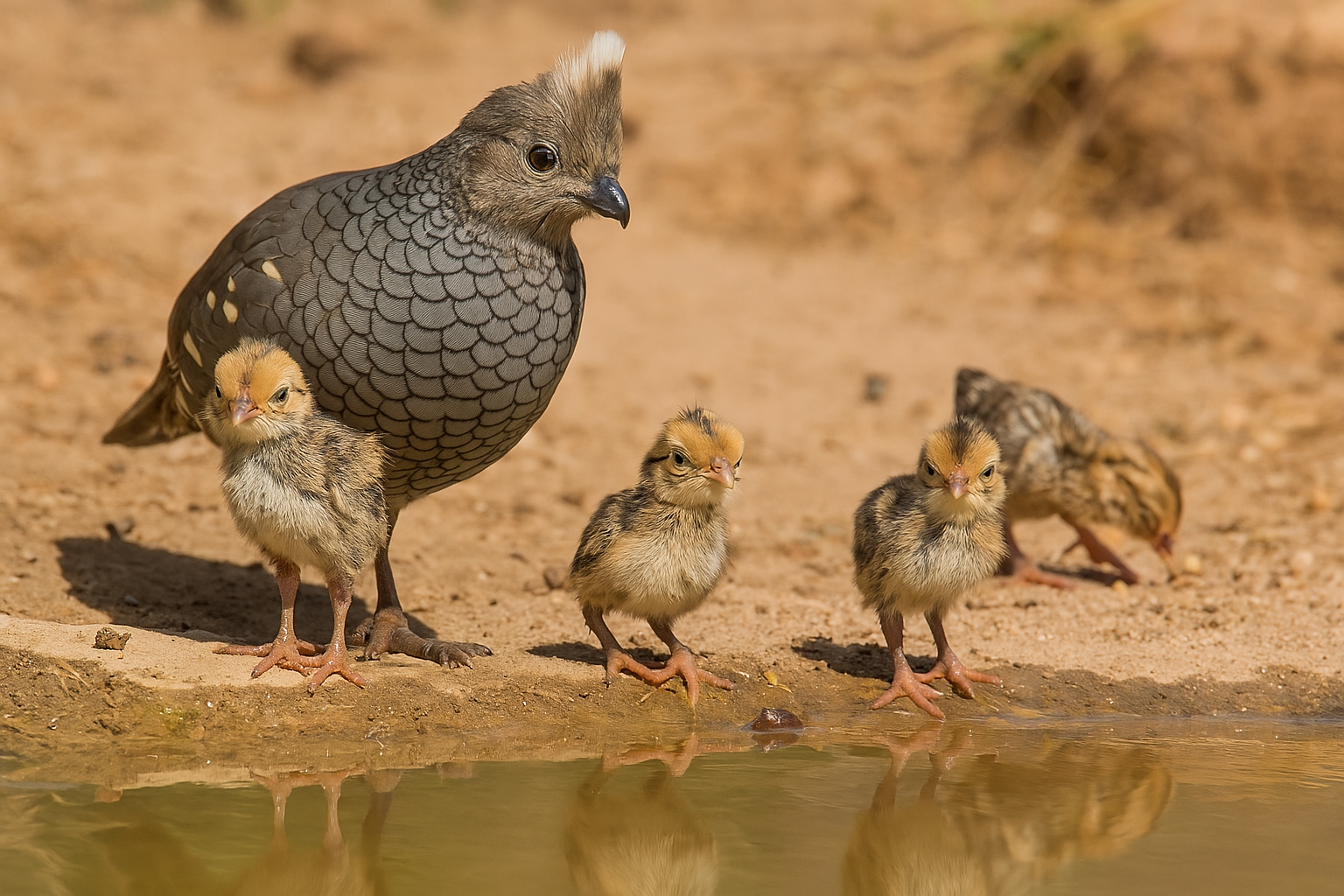
Breeding
Breeding Season
Scaled Quails breed in the warmer months, with males displaying and vocalizing to attract females. Nesting occurs on the ground, with the female laying a clutch of eggs.
Nesting
a suitable nesting area should be provided. They typically lay between 9-16 eggs per clutch. The eggs take about 21-23 days to hatch, and the female usually incubates them.
Quail Chick Care
Brooder Setup
Temperature: Maintain the brooder temperature at 95°F (35°C) initially, decreasing it by 5°F each week as the chicks grow. Ensure the brooder is draft-free and well-ventilated.
Feeding
Feed chicks a specialized game bird starter mix, offering fresh food and water daily. Gradually introduce them to adult feed as they mature.
Feeder and Waterer
Use shallow feeders and waterers to prevent chicks from drowning. Marbles or pebbles can be placed in water dishes to keep chicks safe.
Outdoor Transition
Gradually acclimate chicks to outdoor conditions, ensuring they have shelter and protection from predators.
Joining the adults
Integration with Adults
Once fully feathered and capable of maintaining their body temperature, gradually introduce the chicks to adult quails. Observe their interactions to ensure a smooth transition.
Observe Behavior
Watch for signs of aggression or bullying from the adults. If the chicks are significantly smaller or weaker, they may need more time before integration.
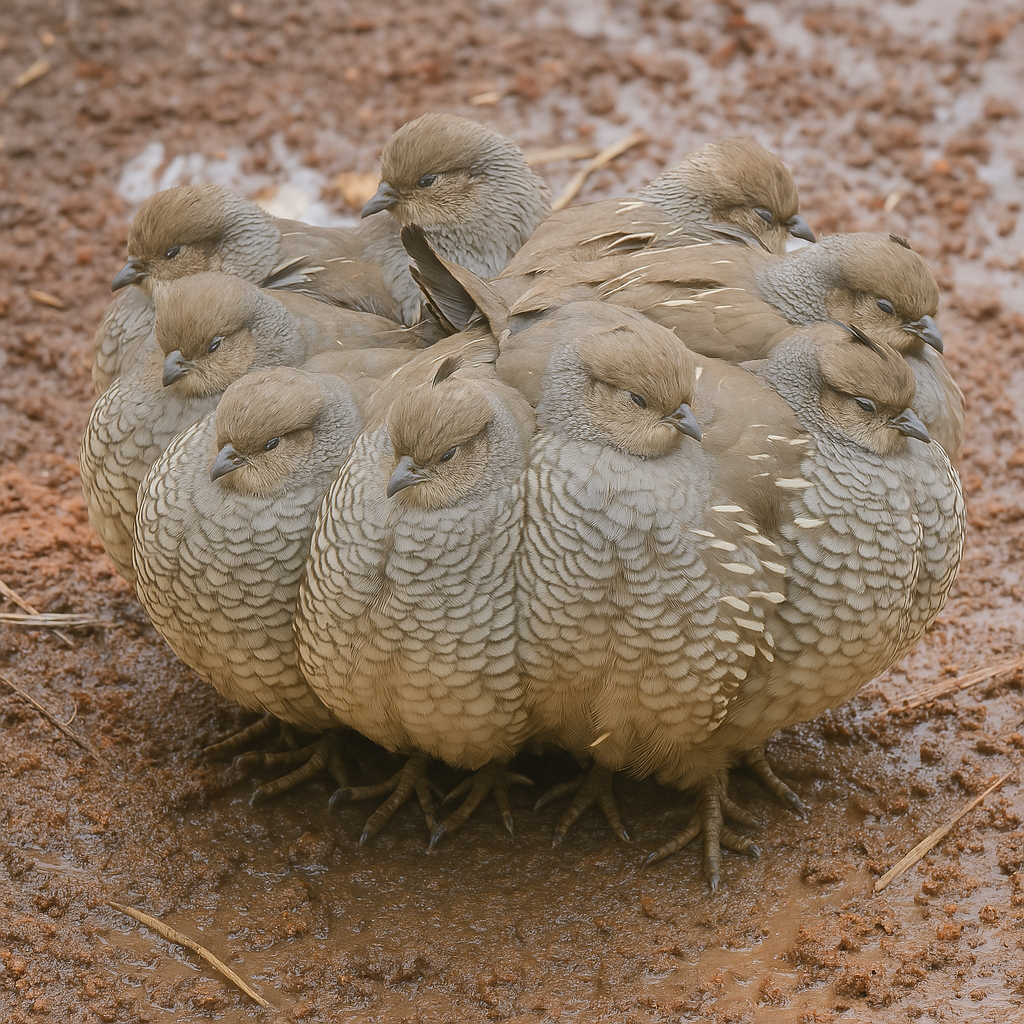
Fun Fact
Scaled Quails often huddle together to stay cool in hot weather and remain vigilant for predators. This behavior helps them conserve body heat and stay safe in their arid habitat.
In this article
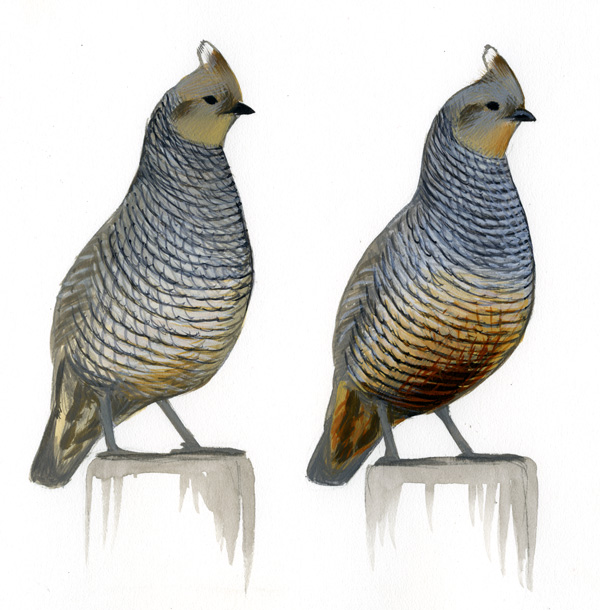
Similar quails
Right: Texas Blue Scaled quail
Left: Scaled quail
Size
The Texas Blue-Scaled Quail is generally larger than the standard Scaled Quail, with a more robust body.
Coloration
The Texas Blue-Scaled Quail has a richer blue-gray color with a more pronounced blue or bluish tint on the back, while the Scaled Quail has a lighter, more uniform brownish-gray body with subtle blue tones around the neck and breast.
Living
The Texas Blue-Scaled Quail is more commonly found in central and western Texas, while the Scaled Quail has a broader range, extending into parts of Arizona, New Mexico, and Mexico.
Behavior
Both species are ground-dwelling, but the Texas Blue-Scaled Quail tends to be more adaptable to a variety of landscapes, including grasslands and desert regions, whereas the Scaled Quail is typically found in more arid, scrubby areas.
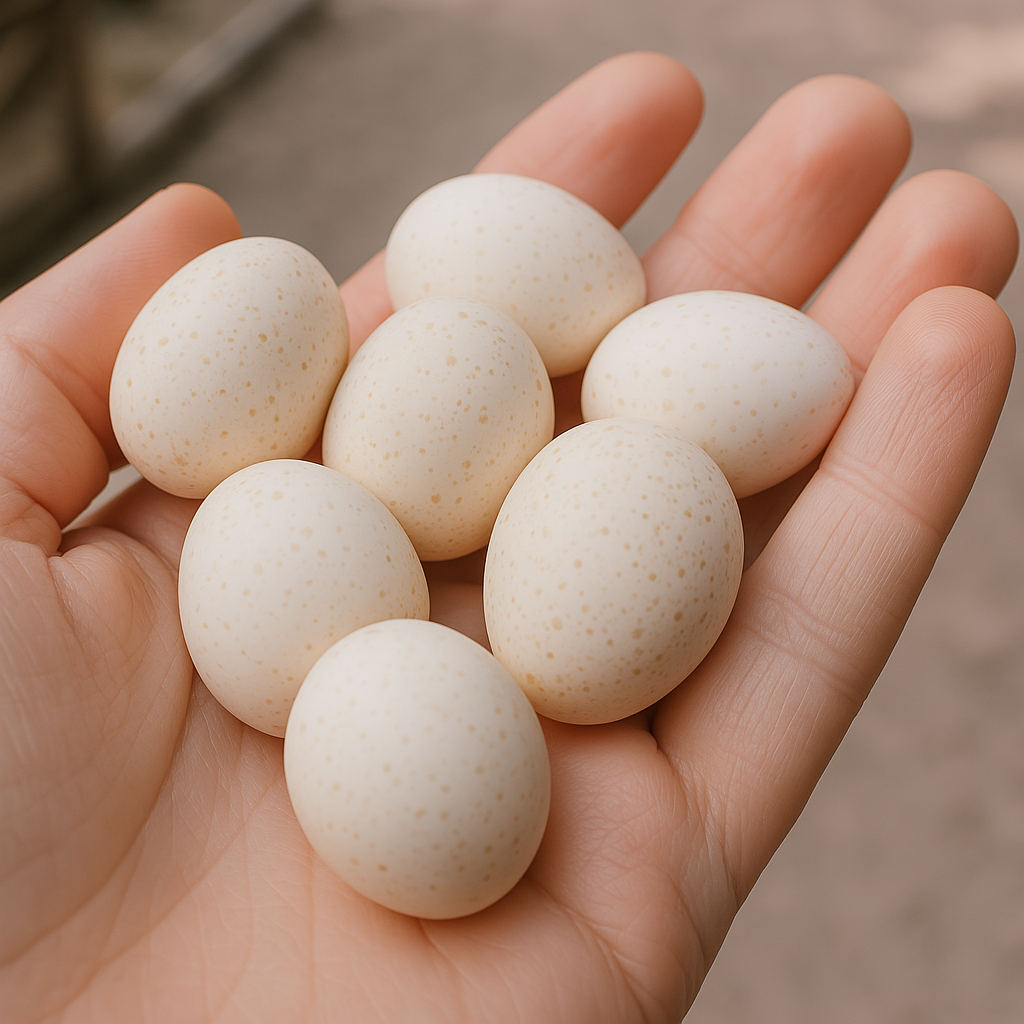
Eggs
Scaled quail eggs are small, typically weighing around 8-10 grams. They have a light tan or cream-colored shell, often speckled with darker brown spots, giving them a textured appearance. The eggs are smooth and firm, with a slightly glossy finish. Their size and markings make them visually appealing, with a delicate and rustic look compared to other quail eggs.
Legal Considerations
Check local laws and regulations regarding the keeping of quail. Some areas may have specific requirements or restrictions.
Permits
In some regions, permits may be required to keep or breed quail.

Montezuma Quail
Montezuma Quail, native to Mexico and the southwestern US, are prized for their unique, camouflaged plumage and subtle crest. These naturally shy and solitary birds are challenging to breed in captivity, and while they require careful health monitoring, their distinctive beauty appeals to experienced aviculturists.
Read more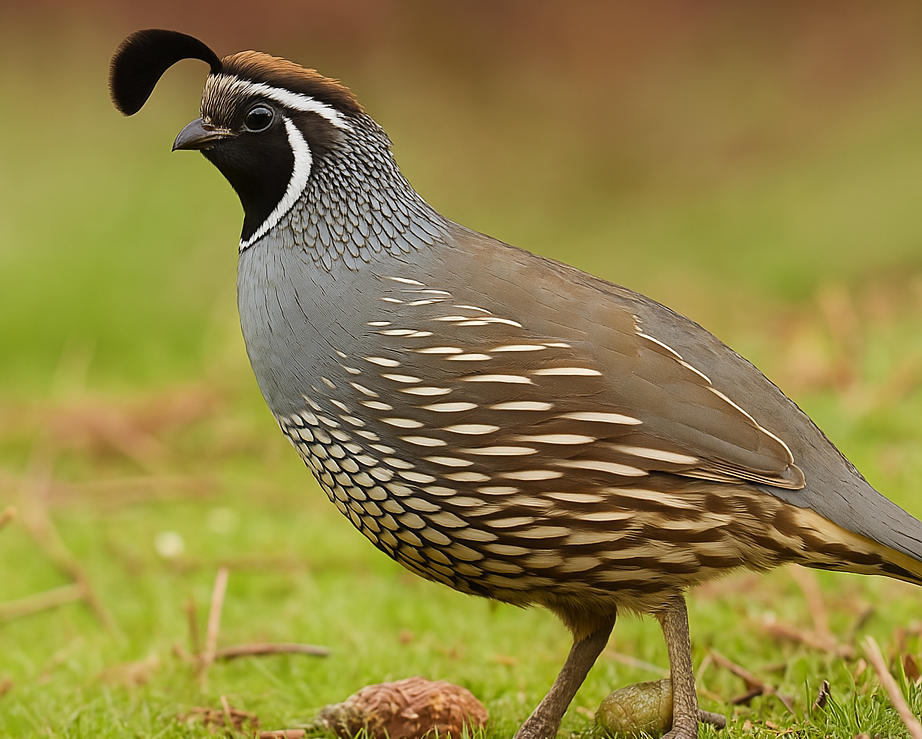
California Quail
The California Quail (Callipepla californica) is a charming and distinctive bird known for its plump body, beautiful plumage, and characteristic head plume, often referred to as a "topknot." These birds are native to the western United States but can be kept as pets with proper care and attention. Here's a comprehensive look at keeping California Quail as pets
Read more
Jumbo Celadon Quail
Jumbo Celadon Quail, also known as Coturnix quail, are a popular breed among poultry enthusiasts due to their distinctive blue or light green eggs, larger size, and efficient egg production. They are a selectively bred variety of the standard Coturnix quail, known for their increased body weight and unique egg coloration.
Read more
Bobwhite Quail
The Bobwhite Quail, also known as the Northern Bobwhite or Virginia Quail (Colinus virginianus), known for their distinctive call and charming appearance, can make unique and interesting pets. Bobwhite quail Have long been popular in North America. They require specific care and habitat conditions to thrive in a domestic setting.
Read more
Texas Blue Scaled Quail
The Texas Blue Scaled Quail is a colorful variant of the Scaled Quail, known for its bright blue-gray plumage and scaled feathers. Native to Texas and arid regions, it prefers grasslands and deserts. These ground-dwelling birds are agile runners and live in social coveys. Their diet consists of seeds, insects, and vegetation.
Read more